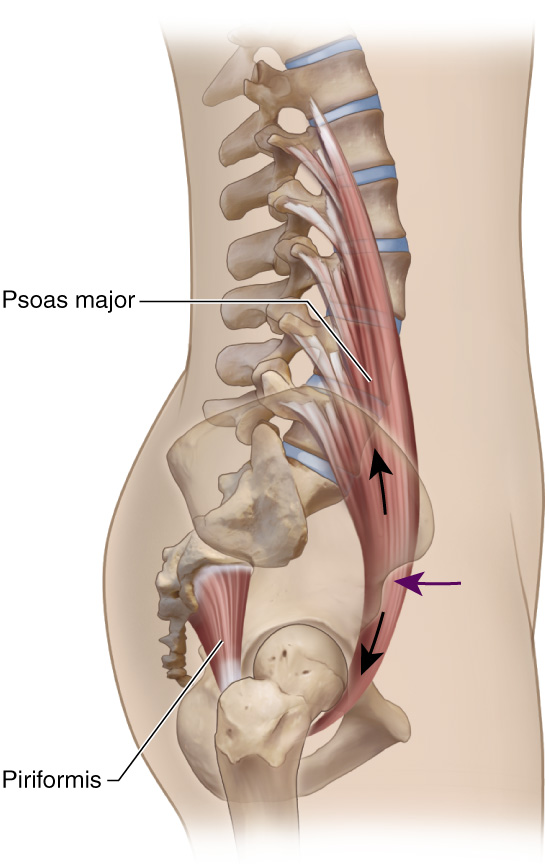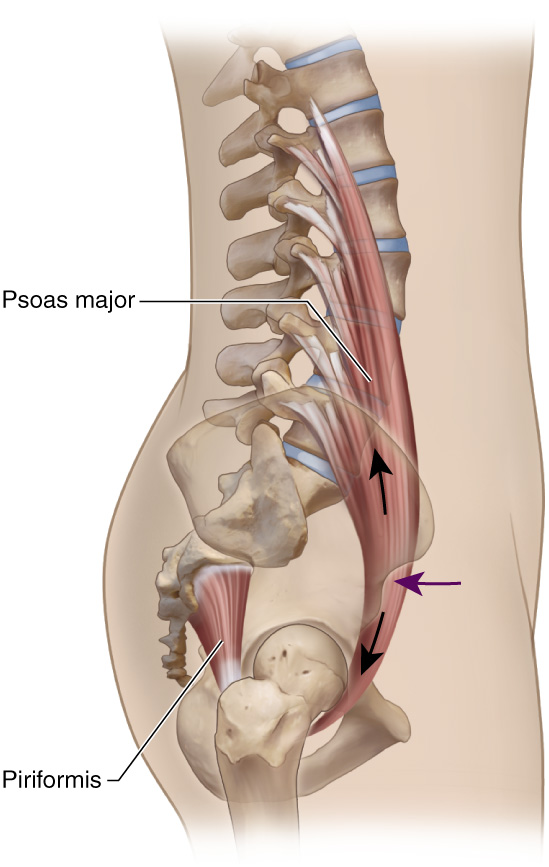Summary of Psoas Major Function
Note: This is the eleventh blog post article in a series of 11 articles on Psoas Major Function. See below for the other articles in this series on psoas major function.
 Evan Osar has stated: “Perhaps no muscles are more misunderstood and have more dysfunction attributed to them than the psoas muscles.” (21). Looking at the multiple joints that the psoas major crosses, as well as its possible subdivision into parts and its multiple fiber directions, it is easy to see why. However, given the intimate and direct association of this muscle with the spine, as well as its indirect effect upon the spine via pelvic posture, and its role in femoral hip joint function, it merits the needed study for its roles in motion and stabilization. Ironically, it is the intimate location of the psoas major so deeply situated in the abdominal cavity against the spine that makes its investigation that much more challenging. Lying deep within the abdominal cavity makes it more difficult to access via manual palpation, as well as fine wire electromyography.
Evan Osar has stated: “Perhaps no muscles are more misunderstood and have more dysfunction attributed to them than the psoas muscles.” (21). Looking at the multiple joints that the psoas major crosses, as well as its possible subdivision into parts and its multiple fiber directions, it is easy to see why. However, given the intimate and direct association of this muscle with the spine, as well as its indirect effect upon the spine via pelvic posture, and its role in femoral hip joint function, it merits the needed study for its roles in motion and stabilization. Ironically, it is the intimate location of the psoas major so deeply situated in the abdominal cavity against the spine that makes its investigation that much more challenging. Lying deep within the abdominal cavity makes it more difficult to access via manual palpation, as well as fine wire electromyography.
For this reason, looking at the psoas major from a biomechanical perspective might be the key to understanding this elusive and controversial muscle. What seems clear is that it crosses and functions across the hip, sacroiliac, and lumbar spinal joints. Given its short moment arm leverage, it would appear that it functions primarily as a stabilizer at these joints. However, because of its large mass as measured by physiological cross section, it also seems likely that it can assist in motion, especially flexion at the hip joint. Unifying these principles together, it might be best summarized that the psoas major’s principal function is specifically to stabilize the lumbar spine while hip joint flexion motion is occurring.
Figure courtesy of Joseph E. Muscolino. Art work by Giovanni Rimasti.
Further Research
There is great need for further research on the psoas major muscle. It would be valuable to continue studying the engagement of its separate parts (upper versus lower and posterior versus anterior) during motion as well as stabilization of the thigh at the hip joint and during motion and stabilization of the lumbar spine. Perhaps most interesting would be to further the study of the role of psoas major engagement to link spinal stabilization with thigh motion. This research would be enhanced if this engagement could be studied not only when the body is in anatomic position, but also at multiple joint angles of the hip and spine. If this research is done by EMG study, then placement of fine wire electrodes must be carefully done. However, another approach to its study that might prove especially beneficial would be to do radiographic scans of it in many individuals while in anatomic position as well as in other positions of the spine and hip joint to determine the anatomic relationship of the psoas major to the hip and spinal joints. This information can then be used to perform “abstract” biomechanical studies that examine the effects of its lines of pull around the multiple joint axes that it crosses to determine its motion and stabilization forces and therefore its effects upon the body.
Click here for a list of the cited references.
Note: This is the eleventh blog post article in a series of 11 articles on Psoas Major Function.
The 11 articles in the series are:
- Introduction & Muscle Biomechanics
- Biomechanics of the Psoas Major (Overview)
- Psoas Major Hip Joint Actions – Sagittal Plane
- Psoas Major Hip Joint Actions – Frontal Plane
- Psoas Major Hip Joint Actions – Transverse Plane
- Psoas Major Spinal Joint Actions – Frontal and Transverse Planes
- Psoas Major Spinal Joint Actions – Sagittal Plane
- Stabilization of the Spine by the Psoas Major
- Psoas Major and the Sacroiliac Joint
- Psoas Major and Fascial Pulls
- Summary of Psoas Major Function & Further Research
- (References)
Note: This article is modified from an article originally published in the massage therapy journal (mtj): Psoas Major Function: A Biomechanical Examination of the Psoas Major. Spring 2013 issue.


